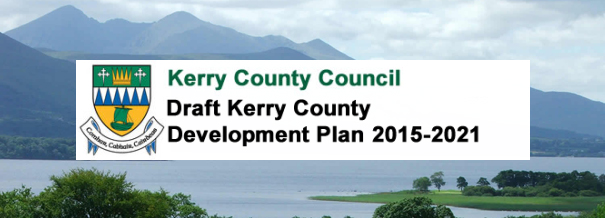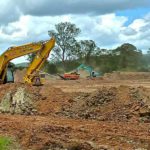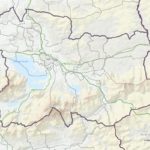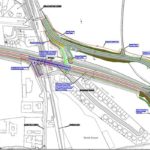What is the development plan?
The development plan is the main public statement of planning policies for the local community and is a blueprint for the future development of the county. It affects many facets of daily economic and social life – setting out a vision of how the county will grow in a proper, planned and sustainable manner over the next six years. It sets out, among other things, the land use, amenity and development objectives of the planning authority for a 6 year period.
What does the County Development Plan cover?
Everything from population growth and projected amount of land needed to house that population growth, to employment and economic development, parks and playgrounds, transport, water & wastewater infrastructure, tourism, natural resources, community development, telecommunications, culture, environment, rights of way and a retail strategy. Everything of note that happens in the county is covered by the County Development Plan.
How does the plan affect me?
If you live in Kerry or visit the county, the County Development Plan impacts on you. Where you live or where you or your family hope to live into the future. How you travel to work or school, the amenities available in your community, whether libraries, beaches, parks, playgrounds or walking trails. The quality of the environment surrounding you, the development of towns and villages around the county, promotion of industry and employment, protection and promotion of our culture and where you go to shop.
Who makes the plan?
The making, reviewing and varying of the plan is a function reserved for the elected members (i.e. councilors) of the planning authority. It is their duty to adopt the plan with the technical help of their officials (the Manager, planners, engineers etc.), and following extensive public consultation.How is the plan made? – Summary of plan making process
The planning authority officials prepare a draft plan, based on a detailed survey and analysis of the area and on submissions from the public and from public and local bodies. Following approval of this by the councillors (by majority vote) it is put on public display for at least 10 weeks. Any person may comment on this draft. All comments are taken into consideration by the councillors, who may change the draft plan based on the Manager’s report or their own views. If the draft is materially altered (i.e. significantly changed), the amendments go on further public display for at least 4 weeks, during which time fresh public comment may be made on these changes. Following consideration of any new comments, the plan is formally adopted by the councillors and becomes the official development plan for the area.Does the plan affect planning applications?
All planning applications are measured against the development plan to assess their conformity with the plan’s objectives and development permitted must normally be in accordance with the plan.
The plan making process explained
The process of making a plan is in 4 stages
What has happened to date?
Stage One – Completed
In March 2013, a review of the current plan preparation process started, looking back at what was achieved during the course of that plan, and how that will feed into the new plan. An Issues Document was sent out (insert link), asking the public to get involved at the early stages of the new plan, to make them aware of the issues that need to be considered in the Plan, to promote discussion and make people more that a plan was being prepared. A number of public information events were held and 56 submissions were received from the public at this stage. These submissions were considered when preparing the first draft of the plan, which was put before the elected councillors in September 2013. The councillors considered the initial draft over the course of three meetings, and reached agreement on the final Draft Plan and passed a resolution to make it the formal draft plan. This is what’s going out on display now. Three environmental assessments were carried out during the preparation of the draft plan and consist of a Strategic Environmental Assessment Report setting out the likely significant effects of implementing the Draft Plan on the environment, a Habitats Directive Assessment Natura Impact Report which assesses the potential for impact on Natura 2000 sites (sites designated by Europe for conservation), and a Strategic Flood Risk Assessment Report. These reports are contained in volume 2 (link to vol 2).
Where we are now ?
Stage Two – Current Stage
The Draft Development Plan is now on public display for a period of ten weeks from the 24th of January 2013 to the 7th of April 2014 and submissions and observations on the draft plan and environmental reports are invited from the public and other interested parties. Once the 10-week public consultation period is over, all the submissions received during this time will be gathered and combined into a Manager’s Report. The report will summarise each submission and make a recommendation as to whether a change to the draft plan should be made. This report will go before the elected councillors for discussion in June or July of this year. The Councillors will probably agree with some of the proposed changes to the Draft Plan and disagree with others. The councillors (by majority vote) decide the changes to be made.
Stage Three – Next Stage
The changes made to the draft plan by councillors together with environmental assessments on proposed changes will go out again for another round of public consultation, allowing the public to view these changes and make submissions in respect of changes. When the process reaches this stage a notice will be put in local papers and on this website letting people know that the changes are on display and inviting submissions. Once the public consultation period is over the county manager will present a report to councillors summarising the submissions and making recommendations on whether the proposed changes should be made to the plan. The councillors (by majority vote) decide the changes to be made and make a resolution to adopt the plan.
Stage Four – Final Stage
The Development Plan comes into force 4 weeks after the date of adoption and will remain in place for 6 years. During this period the objectives and policies of the plan will be used to assess planning applications, to protect the built and natural environment, to inform the location and development of infrastructure including community facilities.















